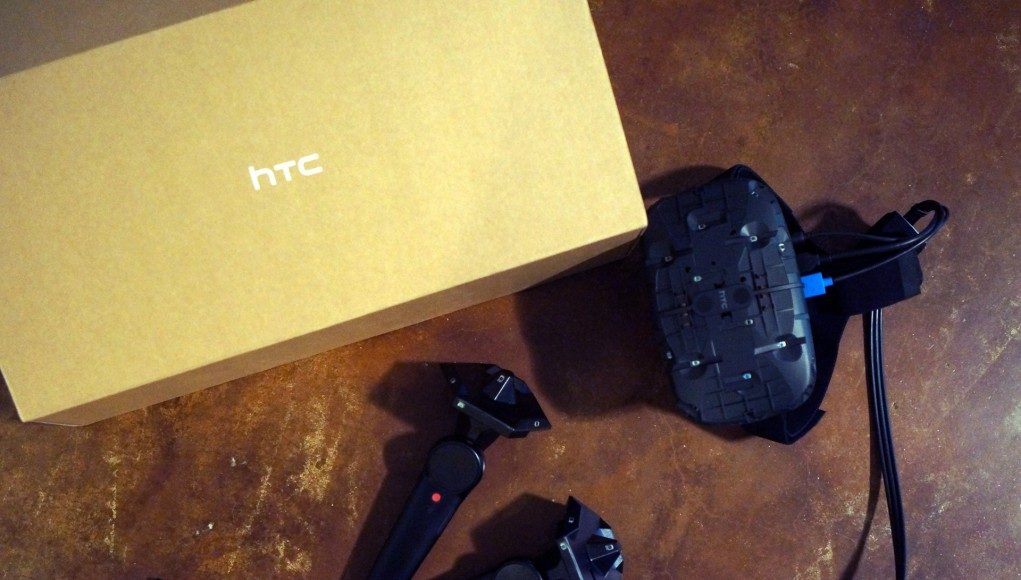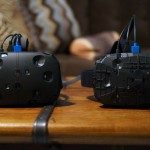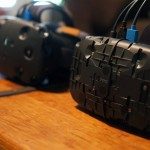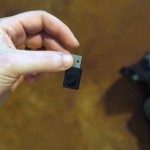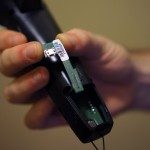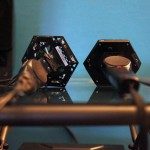The first Vive Developer Edition headsets and controllers for SteamVR are arriving and Owlchemy Labs have been kind enough to provide us with high resolution shots of the system, including the new wireless Lighthouse tracked controllers.
The road to consumer virtual reality just took another turn as Valve hits a major milestone for its Steam VR platform. As promised back in March, developers lucky (or worthy) enough to be selected to receive a Developer Edition system can rejoice, they’ve started shipping! The package includes two Lighthouse base stations, one HTC Vive Headset, cables, and two wireless SteamVR controllers. The controllers are of particular interest as, up until now, units used in public demo’s have been wired only.
We don’t know how closely the HTC Vive Developer Edition system will resemble consumer hardware, but Chet Faliszek indicates it’s designed to be close enough; “This will allow developers to target the same system consumers will have in their homes later this year.”
Owlchemy Labs, who’ve been working with Valve and HTC’s system for some time now (currently developing Job Simulator) are one of the earliest recipients of the new, more polished hardware. Up to now, developers have had to make do with advanced prototypes.
‘Chief Scientist’ Alex Schwartz was kind enough to contain his excitement for long enough to model his Developer Edition for photographer Lauren Ellis of Masonry, comparing the former prototype with the finalized Developer Edition.
The HTC Vive VR Headset
Ever since its famous appearance at Valve’s Steam Dev Days event early last year, Valve’s hardware has impressed. Back then, the units dual panels in portrait orientation and the system’s inside out room-scale positional head-tracking system (using wall-mounted fiducial markers) was in stark contrasts to Oculus’ DK1. At the time, ‘The Room’ VR demo it was the first VR experience people exited claiming to have achieved sustained periods of ‘presence’ (a high level of psychological immersion). The guys from Owlchemy themselves were suitable impressed and told us so in a guest post just after the event.
In the above gallery, we can see the older dev kit (left) versus the new Developer Edition (right). At first glance, the design is very similar to the previous revision, except that it seems as if the front-facing camera’s seem to be either missing or blocked off in this latest version. As the placeholders for them still seem to be there, it may well be that they return in later revision kits and for the consumer edition.
See Also: Valve ‘Vive’ Developer Edition Kits Have Arrived – First Unboxing Images Appear
Note in the final shot, the view inside the headset clearly show the tell-tale rings and ridges of fresnel lenses. It seems this, along with dual display panels and resolution, indicate the similarities between Oculus’ most recent prototype the Crescent Bay and and Valve’s Vive headsets—technical heritage that’s perhaps indicative of the close relationship the two companies enjoyed up until relatively recently.
As far as we now, the new Developer Edition Vive VR headset doesn’t differ greatly in terms of technical specifications. So that’s sub-millimeter, room-scale tracking for the headset and controllers, Dual 1080×1200 OLED panels (portrait orientation)
Valve’s SteamVR Wireless Controllers
Although the VR headset itself was excellent, it was the laser-based tracking solution is what set Valve’s VR demos apart at GDC 2015. That tracking system, known simply as ‘Lighthouse’, is supposed scalable, meaning the system can track more objects in a 15ft x 15ft space than just the headset and controllers. In fact, Valve reckons the computational overhead associated with tracking devices with Lighthouse is so low, that multiple headsets and input controllers could be tracked within a single space, with little trouble (barring obvious issues of occlusion).
See Also: Yes, You Can Juggle in VR with the HTC Vive
Alex Schwartz told us he was thrilled to have his hands on the now-wireless controllers.
“I was overwhelmed with joy [when I first got the controllers] purely because I finally didn’t have to deal with the terrible wire-hell I was in for the past months. It simplifies so much of the put-on / take-off experience,” he said.
The Base Stations
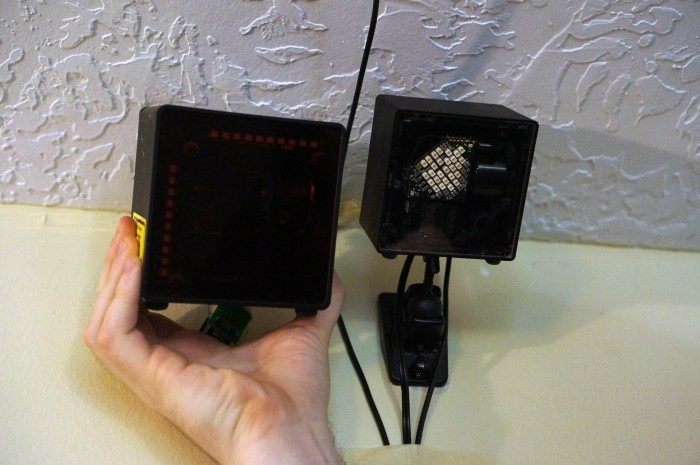
A huge thank you to Owlchemy Labs and Laura Ellis for grabbing these images for us.

